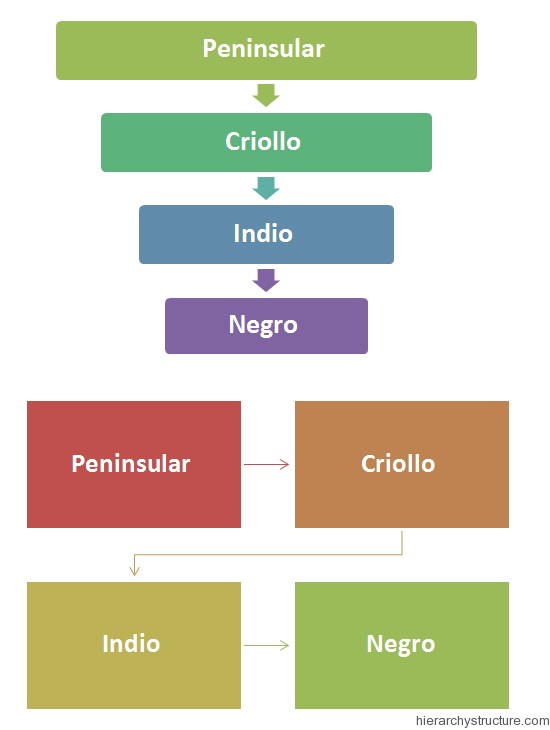Racial hierarchy is a phenomenon or a system of division of the power and labor in human society on the basis of various set rules and guidelines of that specific area. This is basically a system of social stratification and a strong basis for affirmative action. As soon as the Spanish reached, they implemented a callous caste-system which placed Spanish people hailing from Spain at the top and the Amerindians/Africans at the bottom and this further became the major reason and basis of formation of the Latin America racial hierarchy.
The Latin America racial hierarchy was based on race which was used for social control and which also determined a person’s authority, power and rights in the society. Actually the Latin American societies were structured in a fuzzy racial caste system depending on the area where one was born. The races in the racial hierarchy in Latin Americas were organized in the manner that is described in brief as below. The hierarchy is explained starting from the highest rank group having maximum power and authority in Latin America and ending with the group having lowest or zero rights, power and authority.

- Peninsular race
- Criollo race
- Indio race
- Negro race
Peninsular
The highest social position acquiring race or group in the Latin America racial hierarchy is that of Peninsular. This term refers to a person who is born in Spain, which means a Spaniard. The distinction between the natives of Spanish origin and the Americans whom they were colonizing was quite evident. So this gave rise to the term Peninsular in order to distinguish between the people of these two origins. These were provided with the utmost rights and authority in the hierarchy as they were the people who were doing the colonization process.
Criollo
Criollo was the term used for people of Spanish descent born in Mesoamerica. This class of people was the class whose ancestors hailed from Spain but were born locally. This class ranked beneath that of the Peninsular means the people who were permanent residents of the Spain. The Criollo was provided with the most of the local land-owning elite along with the nobility. Criollo people were allowed to possess one great grandparent or an equivalent of him/ her, in order to maintain the social place.
Indio
This term in the Latin America racial hierarchy was also referred as the Indigenous group, the people who were natives of Mesoamerica. These were the people who were subordinate to Criollo class and were provided little rights and authorities of their own in this exemplary hierarchy.
Negro
The lowest level in the Latin America racial hierarchy is of Negro, a term used to refer to a person of black ancestry or appearance. These were the people of African slave descendant. These were like slaved labors for the Peninsular and were provided no rights of their own.
Know more Latin America social hierarchy
